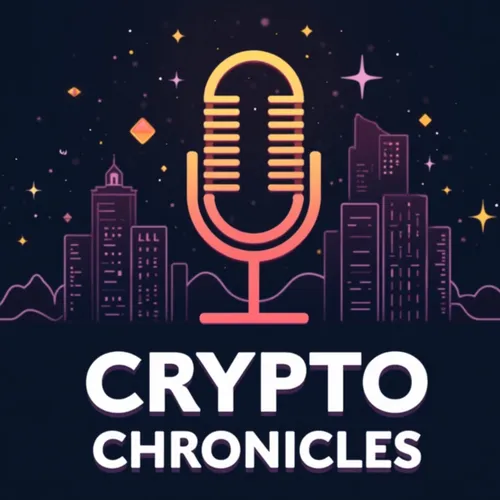Analyzing the Value of XRP: Investments and Applications
- Author
- Produced by Vib Kapila
- Published
- Thu 17 Apr 2025
- Episode Link
- https://podcasters.spotify.com/pod/show/cryptochronicles/episodes/Analyzing-the-Value-of-XRP-Investments-and-Applications-e31m16p
Today we present a novel analytical method using transaction network data to forecast XRP price fluctuations, observing a correlation between network dynamics and price peaks during a past market bubble. Another provides an investment-focused overview of XRP, detailing its technical architecture, real-world applications, and potential for growth, especially with evolving regulatory landscapes and increasing institutional interest in asset tokenization. The final source discusses the broader trends and strategic imperatives in the cross-border payments market, highlighting the roles of emerging technologies like digital currencies and the importance of collaboration and regulatory adaptation to foster a more efficient global payment ecosystem, where XRP could play a significant part.How does XRP's technological framework and unique features position it within the broader cryptocurrency and traditional finance ecosystems?
XRP's technological framework and unique features position it distinctly within both the broader cryptocurrency and traditional finance ecosystems.
Technological Framework and Unique Features:
•Speed and Efficiency: XRP transactions are remarkably fast, typically taking only 3 to 5 seconds. This speed is significantly quicker than major cryptocurrencies like Bitcoin, which can take anywhere from ten minutes to an hour, and Ethereum, which also cannot compete with XRP in pure transaction speed. The XRP Ledger (XRPL) can settle approximately 1,500 transactions per second with a settlement finality of 3 to 5 seconds.
•Unique Consensus Mechanism: Unlike the energy-intensive proof-of-work used by Bitcoin or the slower proof-of-stake, XRP relies on a consensus protocol where trusted nodes validate transactions. This method not only contributes to its speed but also keeps transaction costs extremely low. The XRP Ledger utilizes a 'proof of authority' consensus mechanism where validators participate out of general support for XRP and the Ledger, gaining reputational benefits rather than financial compensation. This volunteer approach has proven exceptionally efficient.
•XRP Ledger (XRPL) Capabilities: The XRPL is a public blockchain designed for fast, low-cost payments. It supports transactions in multiple currencies, including fiat currencies (as IOUs), stablecoins, and other crypto assets. It features a built-in decentralized exchange (DEX) with a central limit order book (CLOB) and an auto-routing mechanism ('Pathfinding' or 'Auto-Bridging') for efficient cross-currency transactions.
•Native Asset Utility: XRP, the native cryptocurrency of the Ripple network, serves several key roles within the ecosystem:
•Interledger Protocol (ILP): Ripple developed the Interledger Protocol, which facilitates transactions between various blockchains and traditional payment rails.
•On-Demand Liquidity (ODL): Ripple offers On-Demand Liquidity, a service that uses XRP as a bridge currency to make cross-currency transactions faster and cheaper for financial institutions.
•Built-In Compliance Features: The XRP Ledger has built-in compliance features that orient it towards regulated activities, including the ability for institutions to issue 'trust lines' and enforce AML/KYC requirements.
Position within the Broader Cryptocurrency Ecosystem:
•Bridge Between Fiat and Crypto: XRP's utility as a bridge currency on its ledger positions it uniquely to facilitate exchanges between traditional fiat currencies and various digital assets.
Position within the Traditional Finance Ecosystem:
•Solution for Cross-Border Payment Inefficiencies: XRP and Ripple's technology directly address the pain points of traditional cross-border payments, which are often slow, expensive, and involve multiple intermediaries.
•Interoperability with Existing Systems: The Interledger Protocol is designed to connect existing financial systems with blockchain technology, facilitating a smoother transition and integration for traditional institutions.
